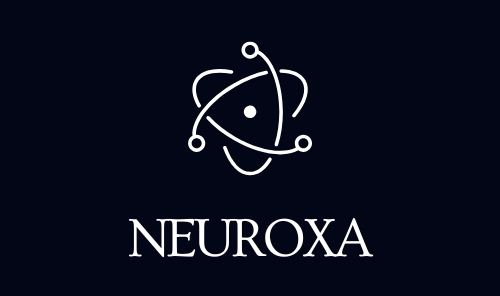Global investment in AI continues to surge in 2025. With $33.9 billion funneled into generative AI alone last year, companies are moving beyond experimentation. Nearly 9 in 10 firms now utilize AI in at least one business function. What once was a futuristic advantage has become a competitive necessity.
- Everyday Life: Learning, Language, and Lifestyle
- Healthcare: Diagnosis, Prevention, and Patient Experience
- Global Strategy: AI as a National Asset
- Technology Trends Shaping 2025
- Education and Jobs: Adapting for the AI Era
- Media, Culture, and Communication
- Energy and Environment: The AI Dilemma
- Security, Risk, and Governance
- What It Means for You
- Final Takeaway
- Backlinks and Interlinks
AI adoption has matured from isolated tools to fully integrated workflows. Companies at the forefront are redesigning operations, hiring for AI fluency, and linking AI directly to their growth strategies.
Meanwhile, productivity gains are showing up. Generative AI alone is projected to boost productivity by 15% in developed economies. Industries exposed to AI are seeing faster wage growth and newer job categories emerging.
Key insights:
- High-performing firms treat AI as a growth lever, not a cost cutter.
- Agentic AI, capable of multi-step tasks, is becoming mainstream.
- Organizations are focusing on ethical scaling, governance, and change management.
Everyday Life: Learning, Language, and Lifestyle
In classrooms and homes, AI is creating major shifts in how people learn and communicate. Teachers using AI tools are reclaiming nearly six hours a week once spent on manual prep. Personalized AI tutors and adaptive learning platforms are rapidly becoming the norm in schools.
The way people speak is also subtly evolving. AI-influenced phrasing, particularly from large language models, is filtering into everyday vocabulary. Researchers are now documenting how younger generations mimic AI-driven communication styles.
AI has also found a new role in content moderation, media production, and even mental wellness support. With generative tools embedded in daily apps, the line between digital tools and personal assistants is thinner than ever.
Healthcare: Diagnosis, Prevention, and Patient Experience
AI is making healthcare faster, smarter, and more predictive. In 2025, global hospitals are using AI to:
- Predict patient readmissions
- Assist in radiology with fracture detection
- Optimize emergency triage flows
In the UK, AI tools predicted hospital transfers with 80% accuracy, helping doctors make informed decisions faster. At the same time, ethical and regulatory oversight is strengthening, especially around data privacy and clinical validation.
There’s also a growing wave of AI-enabled mental health tools, offering on-demand cognitive therapy sessions and mood tracking integrated with wearables.
Global Strategy: AI as a National Asset
Nations are treating AI as a matter of economic security. The US, China, and the EU are racing to build their own foundational models, safeguard chip supplies, and create sovereign AI infrastructure.
Key developments:
- Governments are drafting aggressive AI governance and export-control regulations.
- The gap in AI capabilities is widening, with the US producing over 40 notable AI models in 2024 compared to Europe’s 3.
- Multinational organizations are debating data sovereignty and cross-border model training frameworks.
AI has evolved into a new axis of geopolitical power. The next wave of economic dominance may well hinge on who controls the most capable and sustainable AI ecosystems.
Technology Trends Shaping 2025
Generative AI remains the star, but it’s joined by other breakthroughs:
Agentic AI Systems – These AI agents perform tasks across apps, sites, and platforms. For instance, an AI agent might research a topic, summarize sources, and send an email—all autonomously.
Small Efficient Models – Developers are now prioritizing smaller, faster models that perform nearly as well as their massive counterparts but with lower energy and inference costs.
AI and Robotics Merge – Amazon, Google, and Meta are scaling robotic systems powered by AI to automate physical tasks in warehouses and homes.
Green AI Movement – With AI data centers projected to consume 10% of future global power demand, sustainability is top of mind. Innovations in low-power inference and model distillation are critical.
Education and Jobs: Adapting for the AI Era
AI is not replacing workers—it’s transforming roles. The future belongs to those who adapt quickly. Professionals are upskilling in prompt engineering, AI governance, and hybrid human-AI workflows.
On the education front, new learning paths integrate AI deeply:
- Self-paced AI courses using GPT-powered tutoring
- AI literacy becoming a core requirement in curriculums
- Schools leveraging AI for custom lesson plans and administrative efficiency
Workplaces, meanwhile, are seeing new titles emerge: AI Operations Manager, Prompt Designer, Synthetic Media Specialist.
Media, Culture, and Communication
AI-generated content is everywhere—from articles and ads to music and movies. While this boosts creativity, it also raises ethical questions about originality, transparency, and misinformation.
Language use is shifting too. Studies now show younger generations incorporate AI-influenced phrasing and logic into everyday conversation. Authenticity is becoming more fluid, shaped by both human and machine input.
Meanwhile, influencers and media brands are embracing AI co-creators, speeding up production timelines and boosting audience reach.
Energy and Environment: The AI Dilemma
AI’s carbon footprint is growing. Large models require vast compute and cooling resources. Data centers are mushrooming worldwide, particularly in energy-inexpensive regions.
However, AI is also a tool for sustainability:
- Optimizing energy grid usage
- Enhancing climate modeling
- Monitoring biodiversity via drone imagery
The industry is now investing in energy-aware model design, low-carbon cloud infrastructures, and AI-driven sustainability platforms.
Security, Risk, and Governance
AI safety has taken center stage in 2025. Governments and think tanks are actively working on frameworks for:
- Model alignment and bias reduction
- Safe deployment in critical sectors
- Transparency in generative outputs
The first international AI Safety Index, launched this year, ranks models based on alignment, interpretability, and societal impact. It’s now a reference for procurement, policy, and funding decisions.
Threats like deepfakes, automated misinformation, and malicious autonomous systems remain serious risks. AI governance is no longer optional—it’s a global imperative.
What It Means for You
Whether you’re a business leader, educator, creator, or policymaker—2025 is the year to:
- Embrace AI strategically, not reactively
- Upskill yourself or your team in applied AI skills
- Audit your data and AI usage for transparency and impact
- Stay informed with trusted AI news and watchdog sites
AI isn’t slowing down. And the longer you wait, the further behind you risk falling.
Final Takeaway
AI in 2025 isn’t just a technology story. It’s a social, economic, ethical, and environmental transformation. From boardrooms to classrooms, from healthcare to geopolitics, artificial intelligence is reshaping the rules of the game.
Smart individuals and organizations aren’t just using AI. They’re redesigning their future around it.
Backlinks and Interlinks
References
- Stanford AI Index 2025: https://hai.stanford.edu/ai-index/2025-ai-index-report
- McKinsey State of AI Report: https://www.mckinsey.com/capabilities/quantumblack/our-insights/the-state-of-ai
- PwC AI Jobs Barometer: https://www.pwc.com/gx/en/services/ai/ai-jobs-barometer.html
- Goldman Sachs AI Productivity Forecast: https://www.goldmansachs.com/insights/articles/how-will-ai-affect-the-global-workforce/
- CBS News on AI in Schools: https://www.cbsnews.com/news/artificial-intelligence-school-students-teachers/
- Harvard Gazette on Future of AI in Education: https://news.harvard.edu/gazette/story/2025/09/how-ai-could-radically-change-schools-by-2050/
- Florida State University Research on AI Language Influence: https://news.fsu.edu/news/education-society/2025/08/26/on-screen-and-now-irl-fsu-researchers-find-evidence-suggesting-chatgpt-influences-how-we-speak/
- World Economic Forum: AI Transforming Global Health: https://www.weforum.org/stories/2025/08/ai-transforming-global-health/
- The Times UK on AI Power Consumption (via BP): https://www.thetimes.co.uk/article/ai-data-centres-will-take-10-percent-of-power-demand-increase-says-bp-fmsxq6jgx
- arXiv: AI as Geopolitical Factor in Industry 5.0: https://arxiv.org/abs/2508.00973
- Wikipedia: International AI Safety Report: https://en.wikipedia.org/wiki/International_AI_Safety_Report
- arXiv: Comparative AI Regulation Frameworks: https://arxiv.org/abs/2504.00652
- IEEE Spectrum: 2025 AI Trends and Model Counts: https://spectrum.ieee.org/ai-index-2025
- Microsoft AI Trends 2025: https://news.microsoft.com/source/features/ai/6-ai-trends-youll-see-more-of-in-2025/
- arXiv: Energy-Efficient AI Models: https://arxiv.org/abs/2510.01889
- Le Monde: Big Tech’s Robotics Shift: https://www.lemonde.fr/en/economy/article/2025/03/15/artificial-intelligence-google-openai-meta-and-amazon-turn-to-robotics_6739162_19.html
- State of AI Report by Air Street Capital: https://www.stateof.ai/








